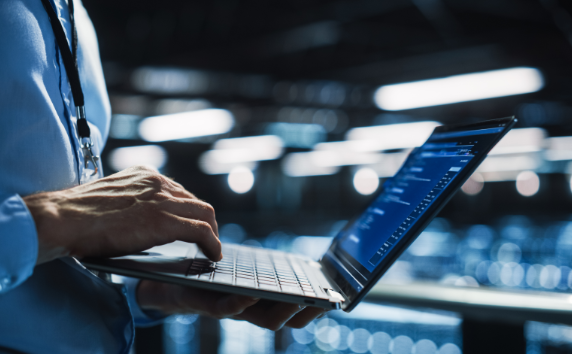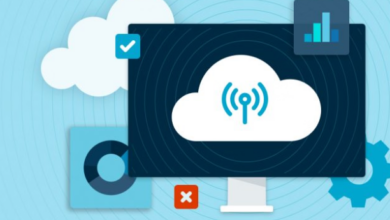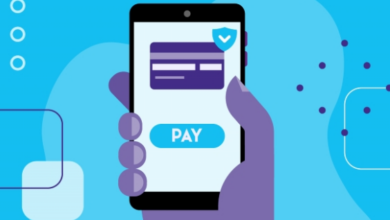RMM for Internal IT Department

RMM for Internal IT Department – RMM, or remote monitoring and management, is a software solution that helps IT departments manage and monitor their IT infrastructure. RMM software can be used to monitor a wide range of IT assets, including servers, workstations, network devices, and applications.
RMM software typically provides a central console that IT administrators can use to view the status of their IT infrastructure. The console can be used to monitor performance, identify problems, and deploy patches and updates.
What is RMM for Internal IT Department?

RMM stands for Remote Monitoring and Management. It is a software solution that allows IT departments to monitor and manage their IT infrastructure from a central location. RMM software can be used to monitor a wide range of devices, including servers, workstations, network devices, and mobile devices.
RMM software can provide a number of benefits for internal IT departments, including:
- Reduced costs: RMM software can help to reduce IT costs by automating tasks, such as patch management and software deployment.
- Improved efficiency: RMM software can help to improve IT efficiency by providing a central location for monitoring and managing IT infrastructure.
- Increased uptime: RMM software can help to increase IT uptime by identifying and resolving problems before they cause outages.
- Improved security: RMM software can help to improve IT security by providing features such as patch management and security scanning.
Benefits of using RMM for Internal IT Department
For internal IT departments, juggling daily tasks and maintaining a healthy IT infrastructure can be a constant challenge. This is where Remote Monitoring and Management (RMM) software steps in, offering a powerful suite of tools to streamline operations and empower your team. Let’s delve into the key benefits of using RMM for internal IT departments:
- Enhanced Efficiency: Imagine a central hub for monitoring all your devices – servers, workstations, network components, the whole fleet. RMM provides this single pane of glass, allowing your IT staff to quickly identify issues, prioritize tasks, and resolve problems efficiently. No more scrambling through scattered spreadsheets or individual device checks.
- Reduced Costs: RMM automates a significant chunk of repetitive tasks, like software patching, system updates, and basic troubleshooting. This frees up valuable time for your IT team to focus on more strategic initiatives, preventative maintenance, and user support. Additionally, by proactively addressing potential issues before they escalate, RMM helps minimize downtime and costly repairs.
- Boosted Security: RMM goes beyond just monitoring. It can be your internal IT security shield. Patch management features ensure your systems are up-to-date with the latest security fixes, while antivirus and anti-malware protection offer additional layers of defense. RMM can even provide remote wipe functionality, a crucial safeguard in case of lost or stolen devices.
- Improved User Experience: Faster problem resolution translates to happier users. With RMM’s remote access capabilities, your IT team can diagnose and address user issues directly, eliminating the need for physical visits. This not only improves user satisfaction but also allows for quicker fixes and minimizes disruptions to workflow.
- Proactive Management: RMM doesn’t just react to problems; it helps prevent them. By monitoring system performance metrics like CPU usage and disk space, you can anticipate potential bottlenecks before they impact user experience. This proactive approach allows for preventative maintenance and resource allocation, ensuring smooth operation of your IT infrastructure.
- Enhanced Reporting and Visibility: RMM tools generate comprehensive reports that provide valuable insights into your IT environment. Analyze trends, identify areas for improvement, and demonstrate the value of your IT department to stakeholders. This data-driven approach allows for better decision-making and resource optimization.
In conclusion, RMM software is a powerful asset for internal IT departments. By streamlining operations, boosting security, and providing valuable insights, RMM empowers your team to become more efficient, proactive, and user-focused. Consider implementing an RMM solution and watch your internal IT department flourish.
How to Choose an RMM for Internal IT Department
Choosing the right Remote Monitoring and Management (RMM) solution is crucial for optimizing your internal IT department. Here’s a breakdown of key factors to consider when selecting the ideal RMM:
1. Sizing Up Your Needs:
- IT Environment Scope: Analyze the size and complexity of your IT infrastructure. How many devices do you manage? Servers, desktops, mobile devices – the number and variety will influence the RMM’s capacity needed.
2. Feature Functionality:
- Essential Features: Patch management, remote access, automated deployments, and antivirus/anti-malware protection are fundamental functionalities. Identify other features crucial for your team, such as mobile device management or asset tracking.
3. Budget Considerations:
- Pricing Models: RMM solutions often have tiered pricing based on features and the number of managed devices. Determine your budget and choose an RMM that offers the features you need within your financial constraints.
4. Scalability and Flexibility:
- Growth Projection: Consider your organization’s future IT needs. Choose an RMM that can scale seamlessly to accommodate growth in devices and users without requiring a complete platform switch later.
5. User-friendliness and Training:
- Ease of Use: Evaluate the RMM’s interface and user experience. A user-friendly platform with intuitive features minimizes training time for your IT staff and ensures smooth adoption.
Additional Considerations:
- Security Features: Assess the RMM’s security protocols for data encryption and access control. Look for solutions that prioritize data security.
- Integrations: Does the RMM integrate with your existing IT tools like ticketing systems or help desks? Seamless integration enhances overall workflow efficiency.
- Customer Support: Reliable and responsive customer support is vital. Evaluate the vendor’s support options and response times to ensure you get the help you need when needed.
Taking it a Step Further:
- Free Trials and Demos: Most RMM vendors offer free trials or demo versions. Utilize these to test-drive the solution and gauge its suitability for your internal IT department.
- Peer Reviews and Industry Insights: Research online reviews and industry comparisons. Seek recommendations from colleagues or other internal IT departments to get valuable real-world perspectives.
Conclusion
RMM software can be a valuable tool for internal IT departments. RMM software can help IT departments save time and money, improve efficiency, increase uptime, and improve security.
When choosing an RMM software solution, consider the size of your IT environment, the features you need, and your budget.




